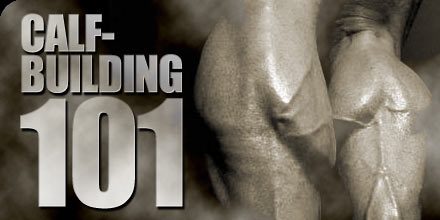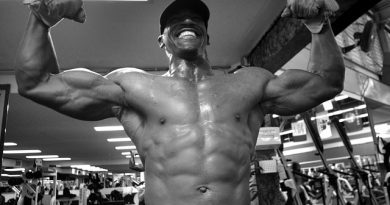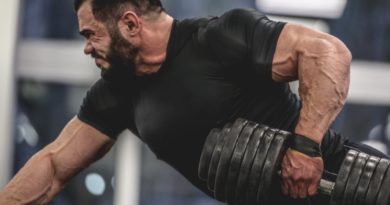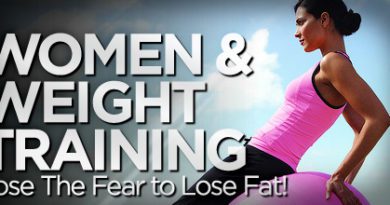Calf Building 101: A Guide on Building Massive Calves
Are you trying to put some mass on your calves? Calf building can be difficult if you don’t know how to properly train them. Here is your guide to gaining the mass you desire.
Disclaimer: This article is for informational purposes only and is not meant to treat or diagnose any condition. It is recommended that you speak with your doctor before starting any exercise program, changing your daily nutrition, or adding any supplements to your regimen.
Table of contents
Anatomy of The Calf
Gastrocnemius:
The gastrocnemius is also called the calf muscle. The muscle itself is one that is visible on the body (meaning it doesn’t lie underneath any other muscles and therefore is not visible by the eye). The gastrocnemius attaches to the heel (at the Achilles Tendon) and originates on the femur (behind the knee). Your calves have two heads (the medial and lateral heads).

Soleus:
Unlike the gastrocnemius, this is one of those muscles that I mentioned above that are not visible because it lies underneath another muscle. It is for this reason that the muscle isn’t very well known among those just starting out. The medial head originates on the posterior tibia and the lateral head on the posterior fibula. These two heads unite and insert into the calcaneal tendon.
Plantaris:
The plantaris is a very small muscle. The long tendon of the plantaris passes between the gastrocnemius and soleus and inserts into the calcaneus. It originates at the lateral epicondyle of the femur, just above the origin of the lateral head of the gastrocnemius.
Why Are Calves So Hard to Grow?
If you’ve been hitting the gym consistently but your calves refuse to grow, you’re not alone. Many lifters struggle to build impressive calves, even when their other muscle groups seem to develop just fine. So, what makes calves so stubborn? Let’s break it down.
1. Genetics Play a Huge Role
Some people are naturally gifted with thick, diamond-shaped calves, while others have to fight for every inch of growth. Genetics determine the length of your calf muscles and how easily they respond to training. If you have high calf insertions (meaning more tendon and less muscle belly), you might find it harder to build thick, full-looking calves.
2. Calves Are Constantly in Use
Unlike other muscle groups that get dedicated workout sessions, your calves are working all day long. Every time you walk, stand, or even balance yourself, your calves are engaged. Because they’re used to constant activity, they’ve developed a high level of endurance, making it harder to stimulate them for growth with standard training methods.
3. Most People Don’t Train Calves Properly
Many lifters treat calves as an afterthought, throwing in a few sets at the end of their workout without much effort. Worse, they often rush through calf exercises without using a full range of motion. Proper calf training requires controlled movements, a strong stretch at the bottom, and a hard contraction at the top to maximize muscle fiber recruitment.
4. Not Enough Training Volume and Frequency
Since calves are used to handling workload every day, they often need more volume and frequency than other muscle groups. Training calves just once a week with a few sets isn’t going to cut it. To force them to grow, you may need to train calves multiple times per week, using a combination of heavy weight and high-rep endurance work.
5. Lack of Progressive Overload
If you’re lifting the same weight for the same reps every workout, your calves have no reason to grow. Like any other muscle, calves need progressive overload—gradually increasing weight, reps, or intensity over time. Without progression, your calves will remain stagnant, no matter how often you train them.
Different Calf Exercises
- Standing Barbell Calf Raises
- Seated Barbell Calf Raises
- Smith Machine Reverse Standing Calf Raises
- Standing Dumbbell Calf Raises
- Seated Dumbbell Calf Raises
- Donkey Calf Raises
- Calf Press on Leg Press Machine
- Single Leg Dumbbell Calf Raises
- Machine Standing Calf Raises
- Machine Seated Calf Raises
Mass Building Calf Workouts
It is important to know that for many people the calf responds to higher reps. See what works for you but for most you need to be doing at least 15 reps per set.
You want to concentrate on really feeling the calf contracting during the set and get a good stretch at the bottom of the movement and a hard contraction at the top.
Do not bounce during the movement. You want to make sure that during both the concentric and eccentric part of the movement is nice and slow and controlled.
Workout #1:
- Standing Barbell Calf Raises 4×15
- Seated Barbell Calf Raises 4×15
- Donkey Calf Raises 4×15
Workout #2:
- Standing Barbell Calf Raises 4×15
- Standing One-Leg Dumbbell Calf Raises 4×15
- Seated Dumbbell Calf Raises 4×15
Workout #3:
- Smith Machine Standing Calf Raises 4×15
- Standing One-Leg Calf Raises 4×15
- Donkey Calf Raises 4×15
Workout #4:
- Calf Press on Leg Press Machine 4×15
- Machine Standing Calf Raises 4×15
- Machine Seated Calf Raises 4×15
Workout #5:
- Calf Press on Leg Press Machine 4×15
- Standing Barbell Calf Raises 4×15
- Machine Seated Calf Raises 4×15
Workout #6 (Smith Machine):
- Smith Machine Reverse Standing Calf Raises 4×15
- Smith Machine Standing Calf Raises 4×15
- Smith Machine Seated Calf Raises 4×15
Workout #7 (Bodyweight):
- Standing Bodyweight Calf Raises 6×15
- Standing One-Leg Bodyweight Calf Raises 6×15
Final Tips for Stubborn Calves
If your calves refuse to grow despite your best efforts, don’t give up just yet. These muscles are naturally stubborn, but with the right approach, you can force them to respond. Here are some final tips to maximize your calves training and finally see results.
1. Stay Consistent and Be Patient
One of the biggest mistakes people make with calves is giving up too soon. Unlike muscles that grow quickly with minimal effort, calves require long-term consistency. If you’re only training them sporadically, it’s no surprise they’re not developing. Commit to working your calves multiple times per week, and over time, they’ll start to respond.
2. Use Advanced Training Techniques
Since calves are naturally resilient, sometimes you need to shock them into growth. Incorporating advanced techniques can push them beyond their comfort zone:
- Drop Sets – Perform a set to failure, reduce the weight, and keep going without rest.
- Super Slow Reps – Slow down both the eccentric (lowering) and concentric (raising) phases to increase time under tension.
- Isometric Holds – Pause at the top of each rep and hold the contraction for a few seconds to maximize engagement.
3. Track Progress and Adjust as Needed
Many lifters fail to track their calves workouts, leading to stagnant progress. Just like with any other muscle, you should be keeping track of your reps, sets, and weights. If you’re not seeing improvement, consider increasing training volume, adjusting rep ranges, or experimenting with different exercises. The key is to avoid doing the same thing over and over while expecting different results.
Conclusion
When it comes down to it you want to focus on the mind-muscle connection. You should really feel each rep and feel the muscle working. If you don’t feel an exercise in your calf, then you are probably doing it wrong or are using a weight that you can’t handle and are using more than just your calf muscles.
RELATED: 7 Shin Splint Stretches to Help Prevent Shin Pain


*Disclosure: This article may contain affiliate links or ads, which means we earn a small commission at no extra cost to you if you make a purchase through these links. These commissions help support the operation and maintenance of our website, allowing us to continue producing free valuable content. Your support is genuinely appreciated, whether you choose to use our links or not. Thank you for being a part of our community and enjoying our content.
PLEASE CONSIDER SHARING THIS ON YOUR SOCIAL MEDIA TO HELP OTHERS LEARN MORE ABOUT THIS TOPIC.





